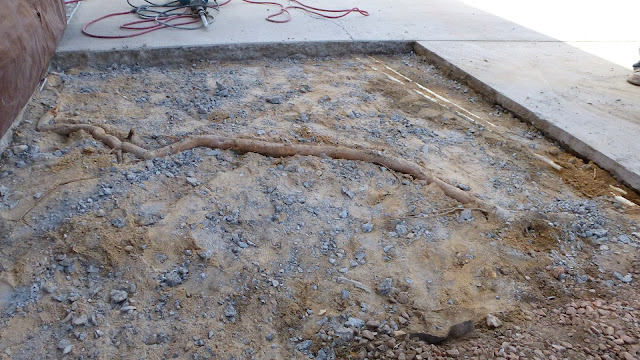Q. My neighbor’s ash tree
grew into their sewer lines and because of that expense, I cut down
grew into their sewer lines and because of that expense, I cut down
mine. My HOA says I must
replace it with another tree. I am looking for something smaller with less
invasive roots. Thinking about a Bird of Paradise, blue Chaste tree or a Bottle
Brush? What do you think? My front yard faces West.
replace it with another tree. I am looking for something smaller with less
invasive roots. Thinking about a Bird of Paradise, blue Chaste tree or a Bottle
Brush? What do you think? My front yard faces West.
A. There are two things to
consider regarding your question; why the tree invaded the sewer line in the
first place and reasons for selecting a replacement plant. Any of your choices
would be fine to fill a space but ask yourself the purpose of this plant before
making that decision.
consider regarding your question; why the tree invaded the sewer line in the
first place and reasons for selecting a replacement plant. Any of your choices
would be fine to fill a space but ask yourself the purpose of this plant before
making that decision.
In our desert, I don’t particularly like the idea of
selecting a plant just simply because it fills a space. Did this ash tree provide
seasonal shade? On the west side of a home this can be quite important for
comfort and reducing electric costs for the AC.
selecting a plant just simply because it fills a space. Did this ash tree provide
seasonal shade? On the west side of a home this can be quite important for
comfort and reducing electric costs for the AC.
 |
| Fan Tex ash can also get borers that can cause it to decline as well. |
To improve comfort in a home and reduce energy costs, it
is more important to shade the South and West walls of a building than it is
the roof. The most “bang for your buck” in this regard comes from deciduous
(those that drop their leaves in the winter) small trees or shrubs that don’t
grow much taller than the building.
is more important to shade the South and West walls of a building than it is
the roof. The most “bang for your buck” in this regard comes from deciduous
(those that drop their leaves in the winter) small trees or shrubs that don’t
grow much taller than the building.
 |
| Ash tree roots can be quite invasive and they will go anywhere there is water and nutrients. Sewer lines sound like a smorgasbord for them! |
Smaller plants generally use less water than larger ones.
Pick something that can handle the heat of a Western exposure, drops its leaves
in the winter and doesn’t get much above fifteen feet tall if you live in a
single-story residence, 30 feet tall for a two-story residence. Plant it a
distance from the wall about half of its mature height.
Pick something that can handle the heat of a Western exposure, drops its leaves
in the winter and doesn’t get much above fifteen feet tall if you live in a
single-story residence, 30 feet tall for a two-story residence. Plant it a
distance from the wall about half of its mature height.
 |
| Ash trees come as either male or female “flavors”. The trees selected and favored for landscapes are the male trees because the females make seed that drop everywhere and can be quite messy. |
The second issue is invasion of sewer lines. This can
happen with nearly any plant but some are, root-wise, more aggressive than
others. But roots need an opening or break in the line for this to happen. If
the line is completely sealed, roots will not enter it.
happen with nearly any plant but some are, root-wise, more aggressive than
others. But roots need an opening or break in the line for this to happen. If
the line is completely sealed, roots will not enter it.
Breaks in a sewer line are more likely if a tree is
growing close enough so their roots “crush” it. Crushing a sewer line because
of enlarging roots causes an entry point for roots to grow. Once this entry
point is made, nearly any tree or shrub becomes “invasive” and plug it.
growing close enough so their roots “crush” it. Crushing a sewer line because
of enlarging roots causes an entry point for roots to grow. Once this entry
point is made, nearly any tree or shrub becomes “invasive” and plug it.
 |
| And ash trees can have nice fall color from yellow to reds to purple, weather permitting. |
Use irrigation to direct the growth of roots in desert
soils. People who don’t live in the desert can’t use it to their advantage.
Locate irrigation emitters on the side of the tree or shrub away from the sewer
line to wet the soil away from the sewer line.
soils. People who don’t live in the desert can’t use it to their advantage.
Locate irrigation emitters on the side of the tree or shrub away from the sewer
line to wet the soil away from the sewer line.
Keep the area around the foundation as dry as possible a
distance of at least 3 feet. As added protection, you might consider a
commercial “root barrier” installed between the plant and the sewer line.
distance of at least 3 feet. As added protection, you might consider a
commercial “root barrier” installed between the plant and the sewer line.


